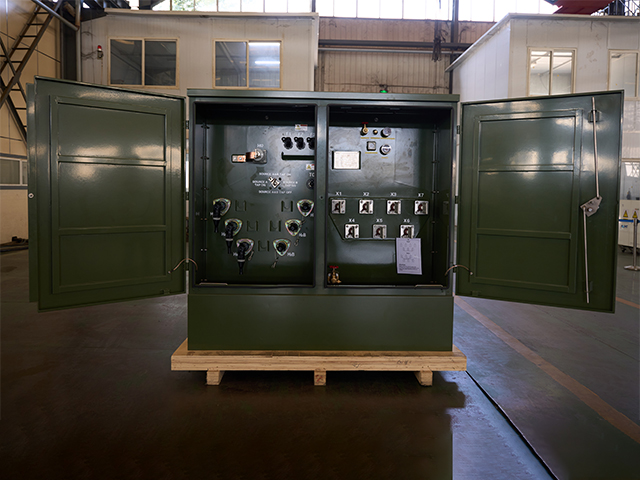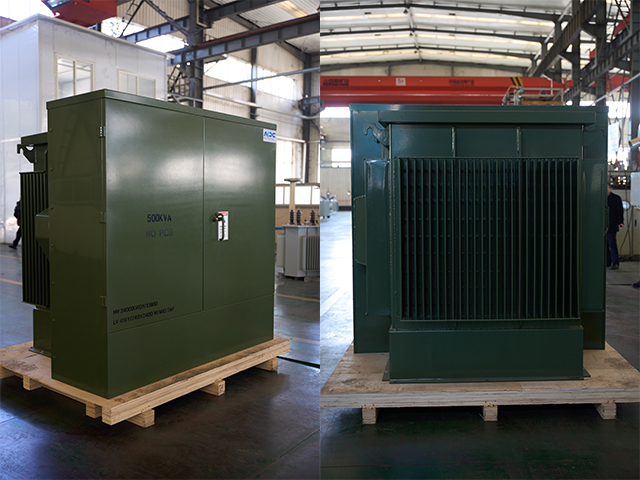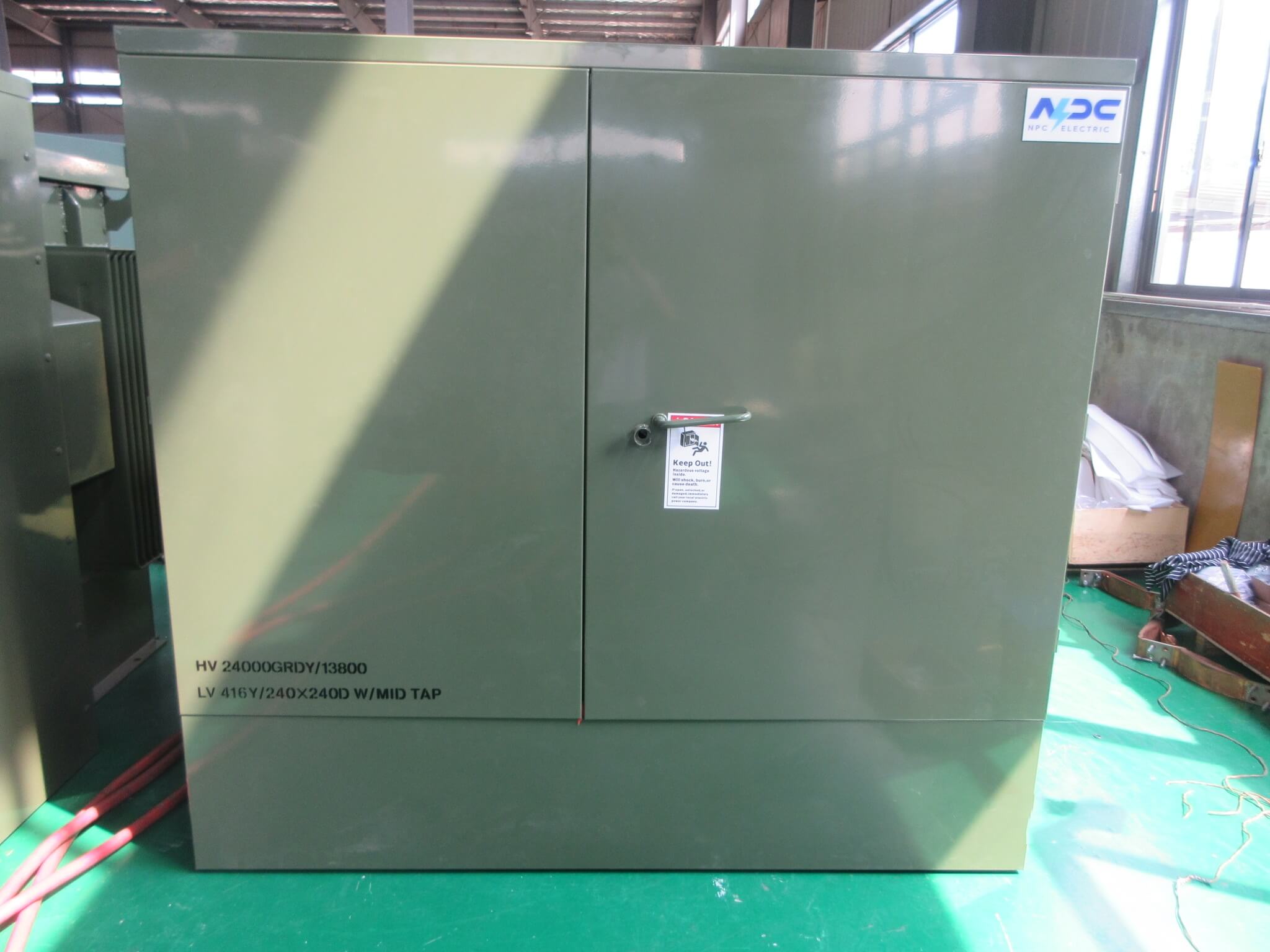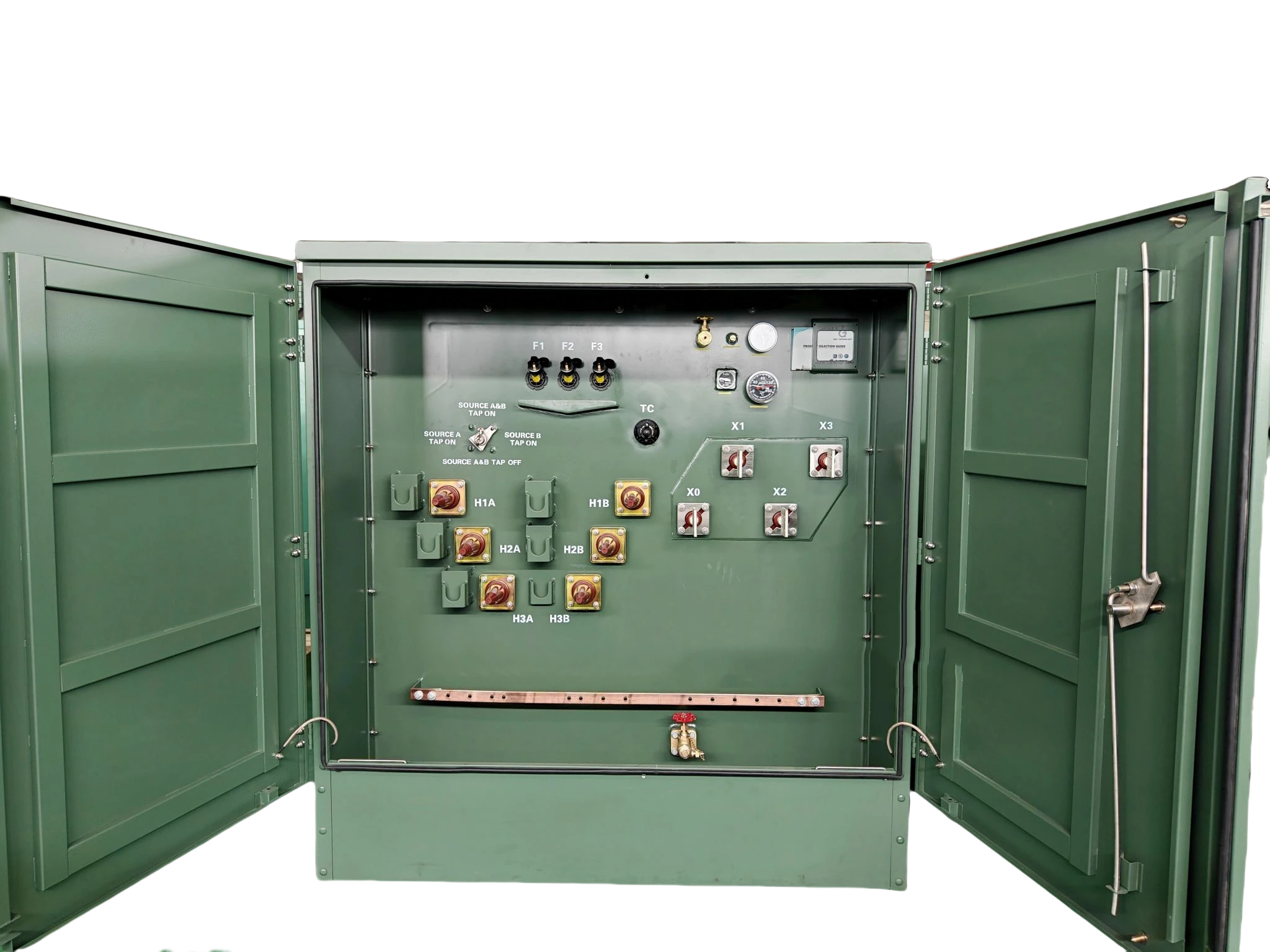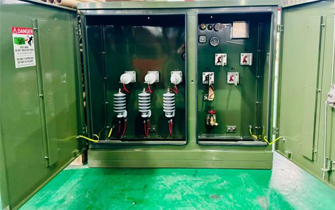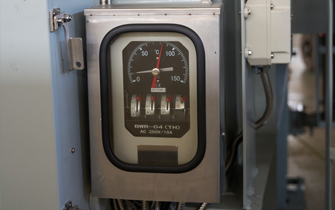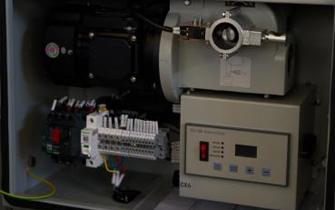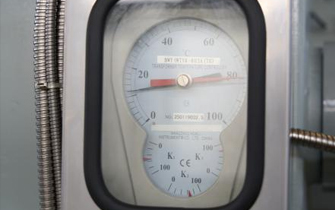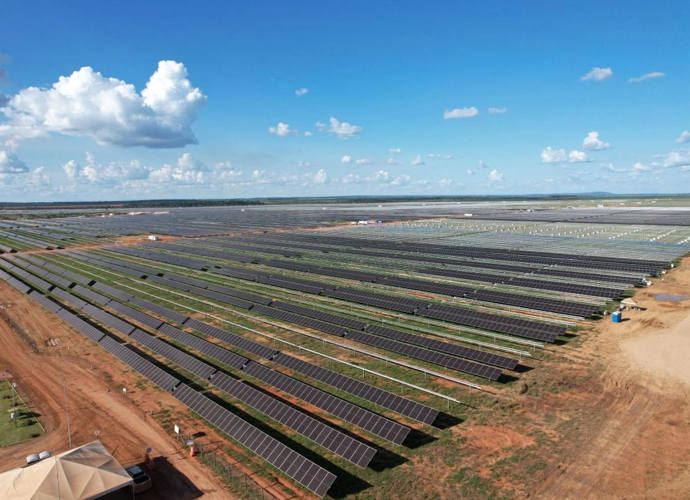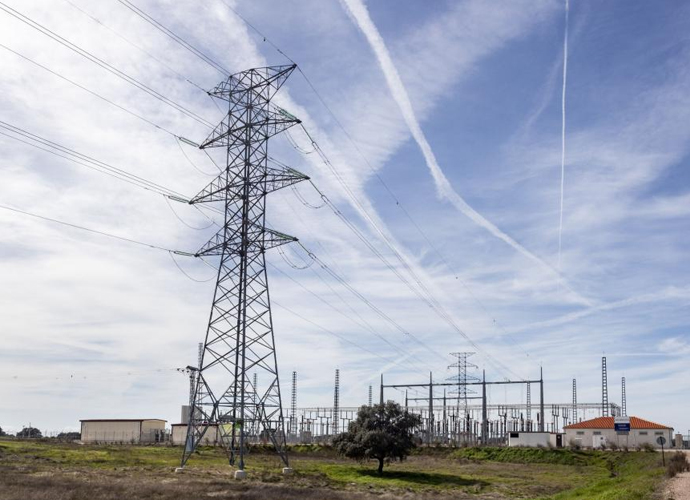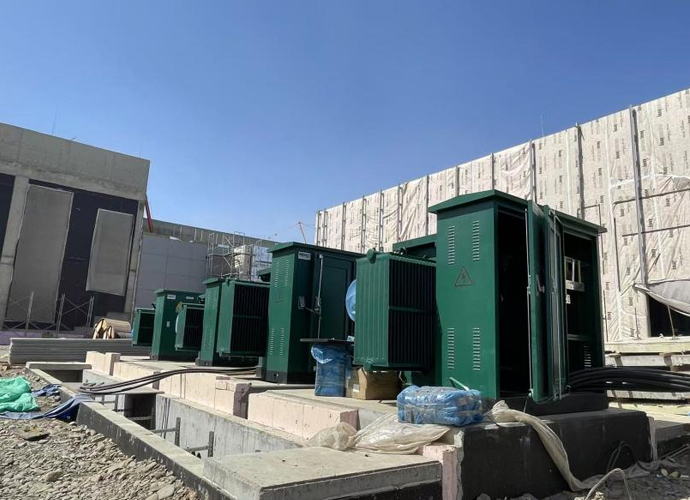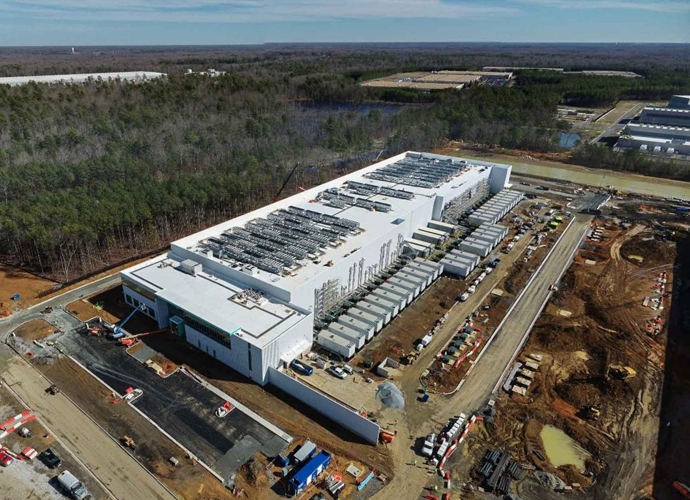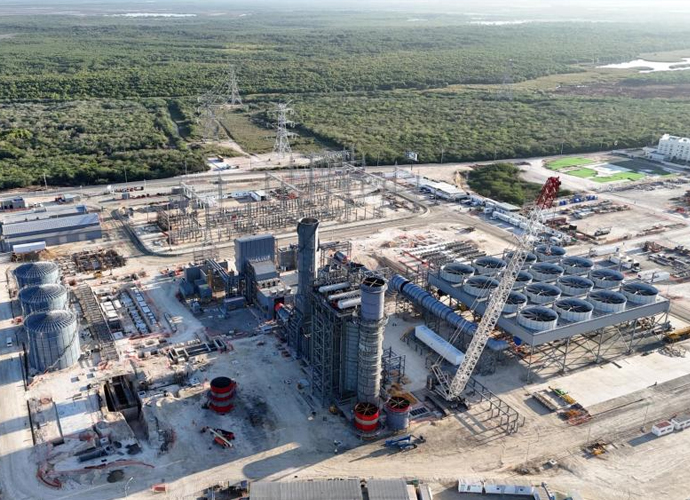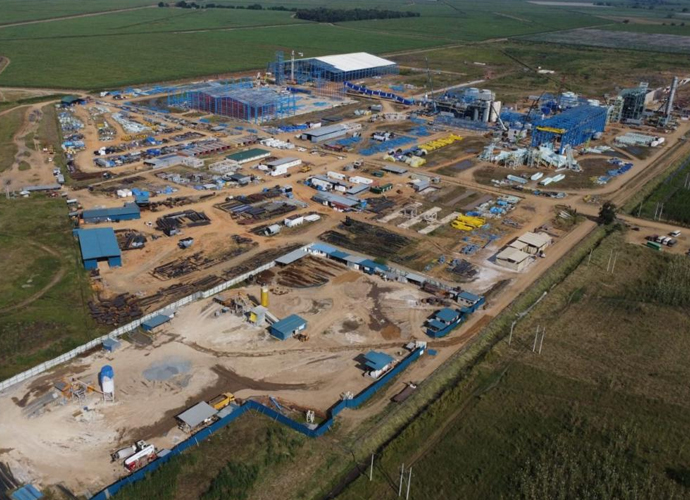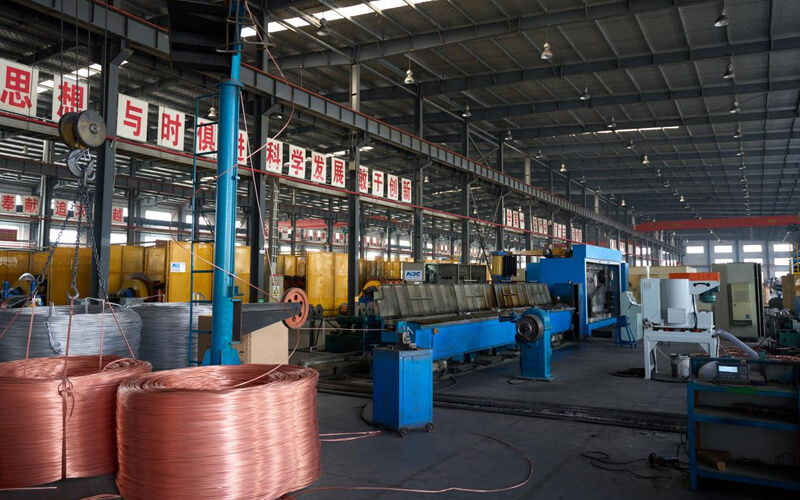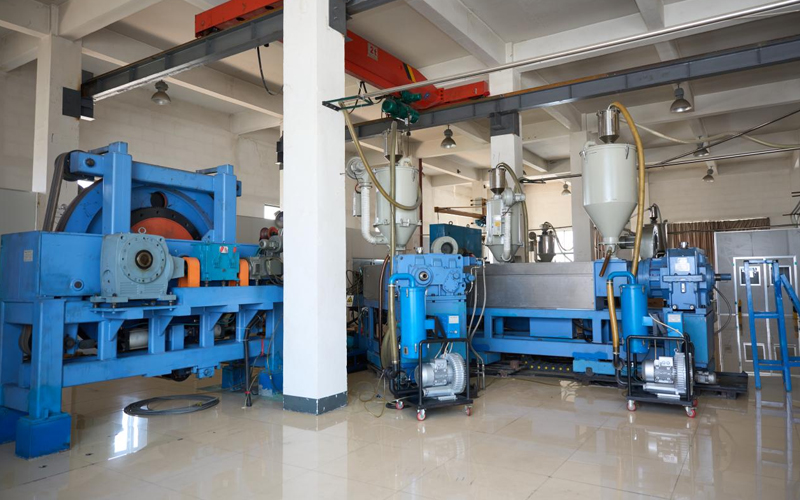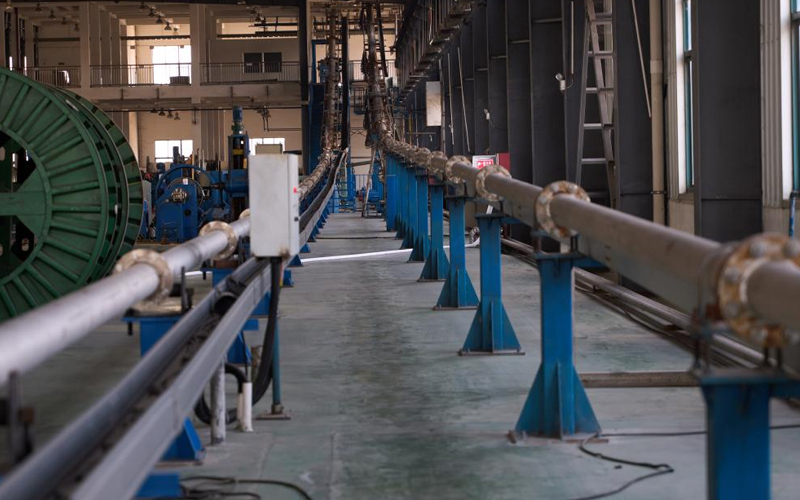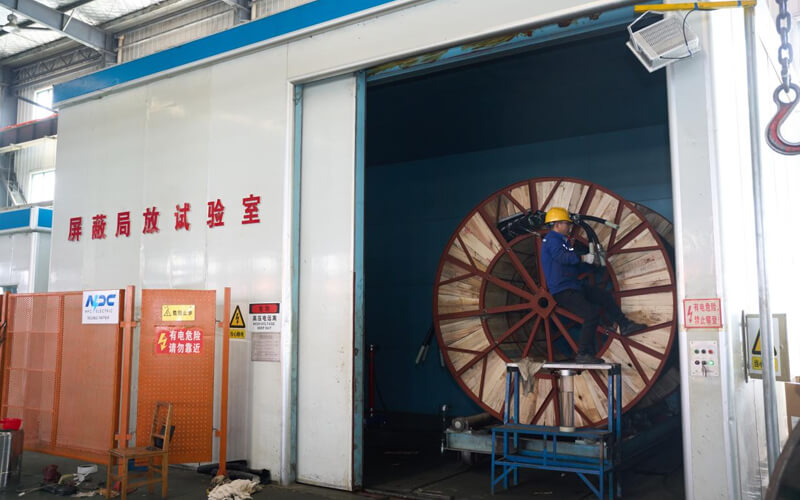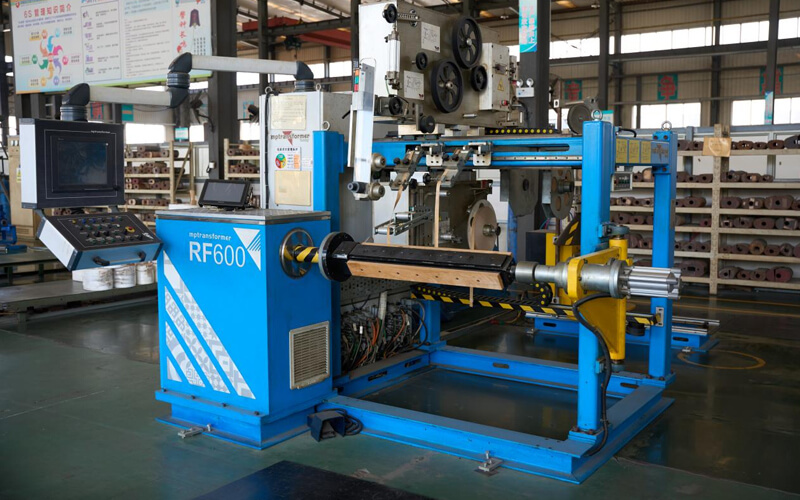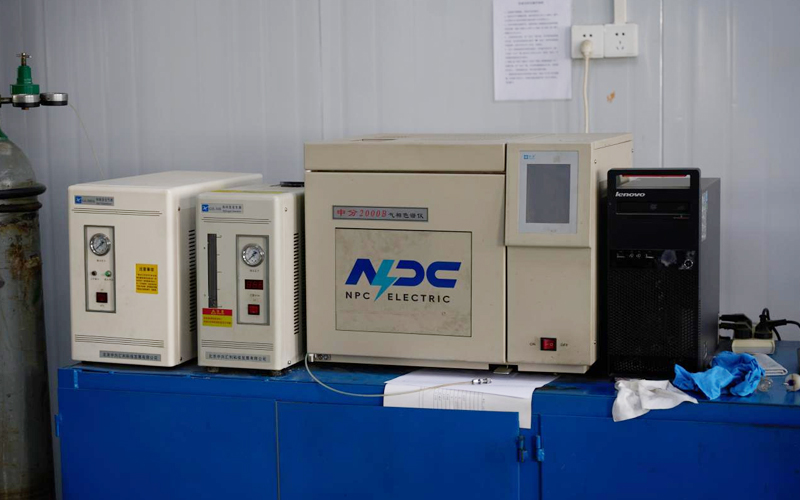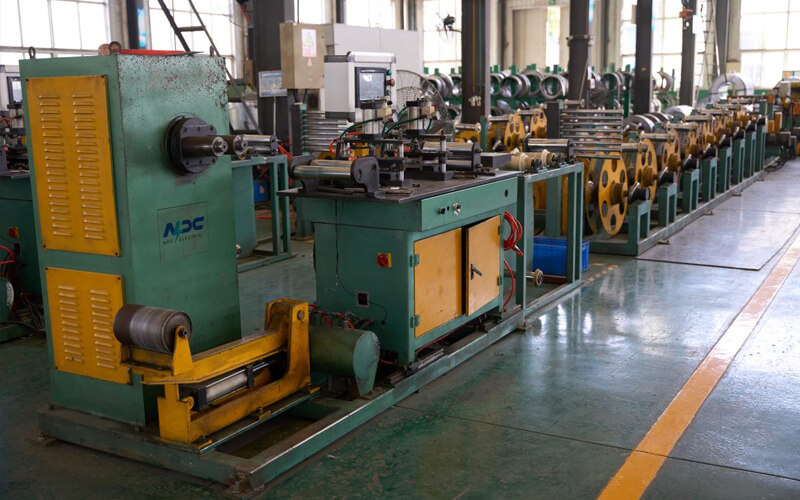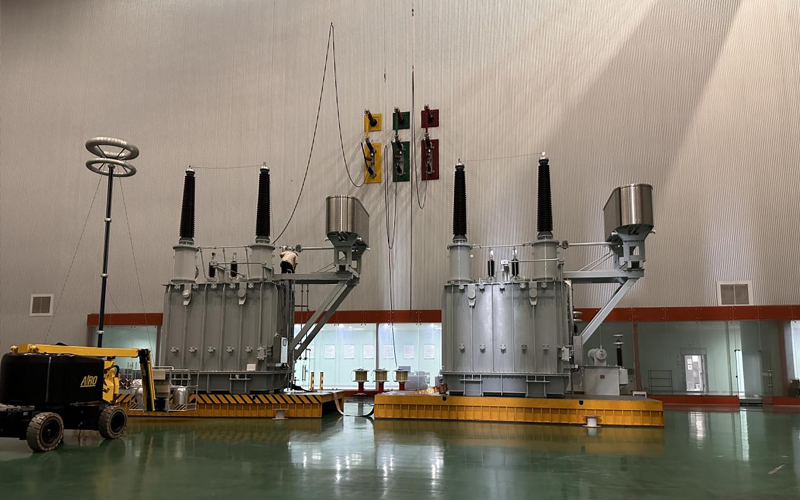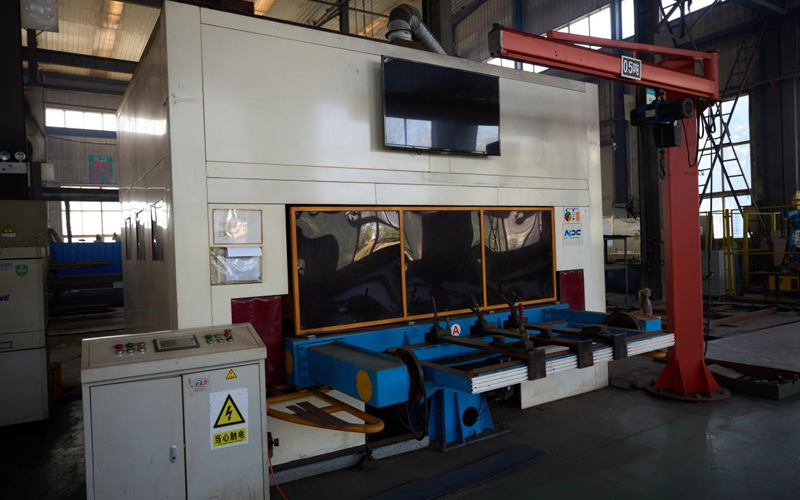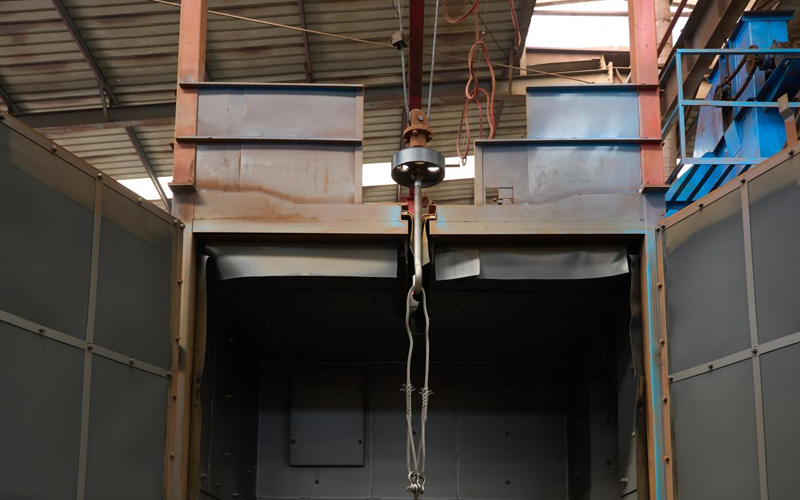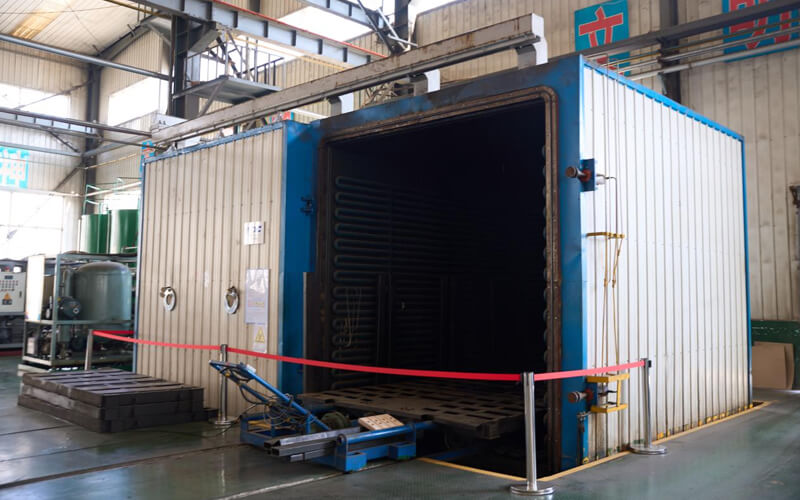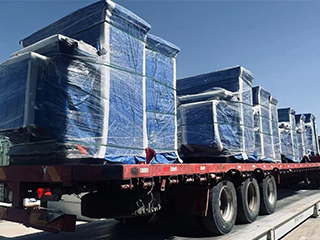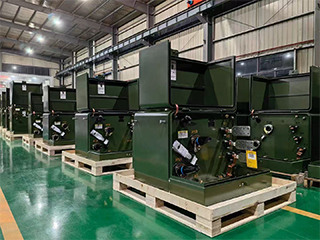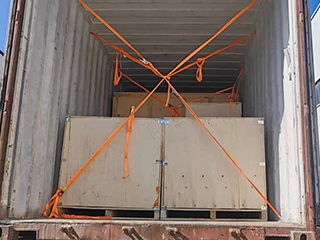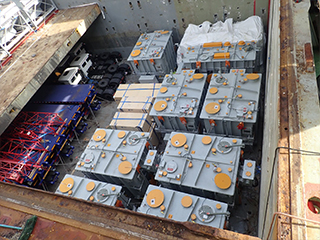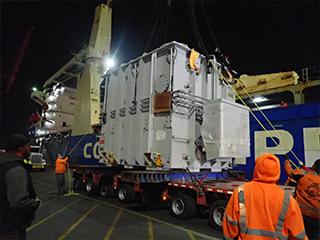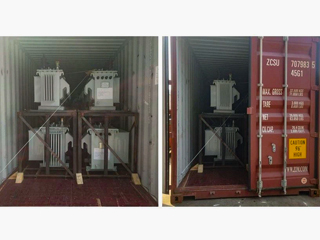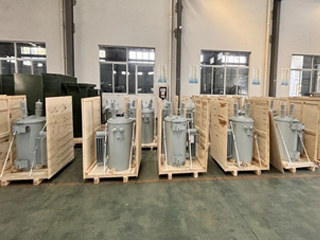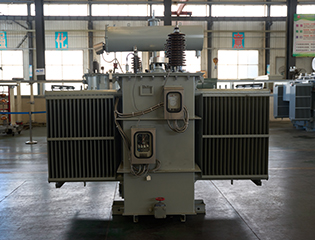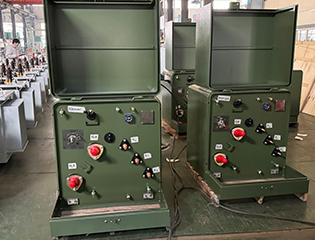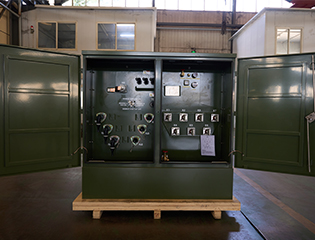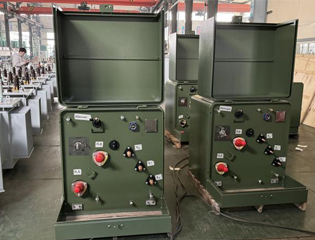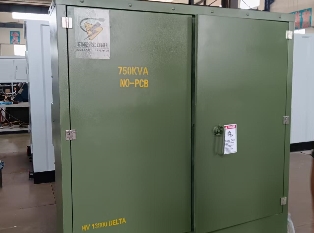2500kVA Three Phase Pad Mounted Transformer
- Primary Voltage Ratings 34.5-19.92/13.8-7.957/13.2-7.62/12.47-7.2, 24.94, 26.25, 33 or others
- Secondary Voltage Ratings 208GrdY/120;416GrdY/240 or Customized
- H.V. Tap Range ± 2×2.5% HV taps or others
- Type Loop Feed or Radial Feed
- BIL 30/95kV
- Standards IEEE, CSA, DOE
- Application BESS, Crypto mining, Industry, Wind and Solar energy, EV charging
- Power Rating 2500kVA
- Certificate UL, cUL, CSA, SGS
- Cooling Method ONAN, ONAN/ONAF, KNAN, KNAN/KNAF
- Oil Mineral Oil or FR3
- Opeartion Step Down & Step Up
Technical Specifications
| Rated Power | 2500 kVA |
| Rating Primary Voltage | 4.16-34.5kV or customized |
| Secondary Voltage | 480GrdY/277 208GrdY/120 400GrdY/230 Customized(208Y/120 V to 4,160 V) |
| Frequency | 50/60Hz |
| Vector Group | Dyn1/Yyn0/Dyn11/Dyn5 |
| Winding Material | Aluminum/Copper |
| Efficiency | As IEEE,Doe 2016,CAS Std or Customized |
| Impedance Voltage | Nominal 3.5% or Customized 1.1-5.75% |
| Altitude | ≤1,000m or Customized |
| Color | ANSI 70 Light gray/Munsell 7GY3.29/1.5 or customized etc |
| Tank material | Mild Steel, 304 Stainless Steel |
| Insulating Oil Weight | 1450 kg |
| Total Weight | 4900 kg |
| Outline Dimensions(L×W×H)in. | 1730×2100×2300(mm) |
| Lifting Lug | ELSP Fuse |
| Hinged Door | BAY-O-NET Fuse |
| Parking Bracket | Tap Changer |
| Tank Cover | Oil Level Gauge |
| L.V Bushing (4-Hole ) | Pressure Relief Valve |
| Two/Four Position Load break Switch | Vacuum Pressure Gauge |
| HV Grounding Copper Bar | Terminal Block |
| Temperature Indicator | Door Handle |
| H.V Bushing Well(15kV) | Ground Strap |
| Grounding Copper Bar | Nameplate |
| 1"'Drain Valve With 3/8" Sampler | IR Window |
| 1" Upper Fill Valve Filter Press Connection | Terminal Box |
| Non-PCB decal | High Voltage Warning Signs |
Customization Optional
Input voltage (high voltage side) - You can select different input voltages such as 10kV, 15kV, 20kV, 35kV according to the voltage level of the power grid, and flexibly respond to the needs of different regions and power systems.
Output voltage (low voltage side) - You can select different low voltage output voltages such as 400V, 415V, 480V, 600V, etc. to meet the power needs of various loads.
Cooling method - Provide cooling methods such as ONAN (oil-immersed self-cooling) and ONAF (oil-immersed air cooling). Select the most suitable cooling solution according to the load requirements to ensure that the transformer works efficiently and stably.
Transformer oil - Provide different types of transformer oil, including mineral oil, FR3 environmentally friendly oil, etc., to ensure insulation performance while improving environmental protection standards.
These optional configurations ensure that the transformer can provide efficient and reliable power in a variety of power applications, while also meeting the needs of different environments and loads.
Packing and Shipping
We use waterproof, moisture-proof, and pressure-resistant high-strength wooden boxes or metal frames for packaging, which firmly fix the transformer in the packaging to avoid vibration or collision during transportation. Warning labels such as "fragile, please handle with care" are also marked on the outside of the packaging box to remind transportation personnel to pay attention to safe operation.
In order to reduce the risk of external impact, we use anti-seismic materials such as foam, rubber pads, and wood supports between the transformer and the packaging box. These buffer materials can effectively absorb vibrations and external forces during transportation to ensure that the internal parts of the transformer are not damaged.
For humid or highly corrosive transportation environments, we encapsulate the transformer with a moisture-proof film and apply anti-corrosion coating to the exposed metal parts to effectively prevent moisture and salt spray from corroding the equipment and extend the service life of the equipment.
In order to ensure the safety of the equipment during transportation, we provide full transportation insurance services to prevent unnecessary economic losses to customers in the event of accidents during sea transportation.
Through these professional packaging and transportation measures, we ensure that the 2500KVA three-phase American box-type transformer can be safely and stably transported from the factory to the customer, and perform at its best during the final use.
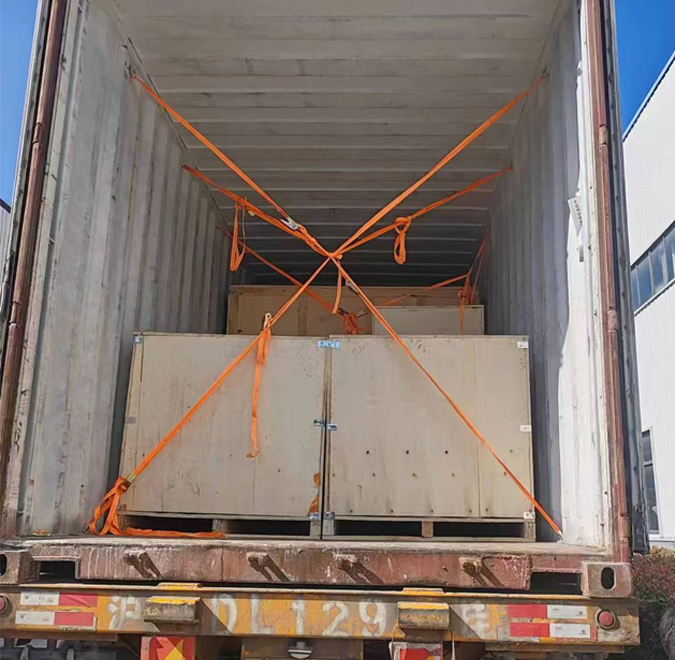
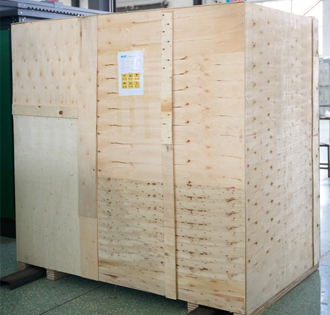
Manufacturer Test
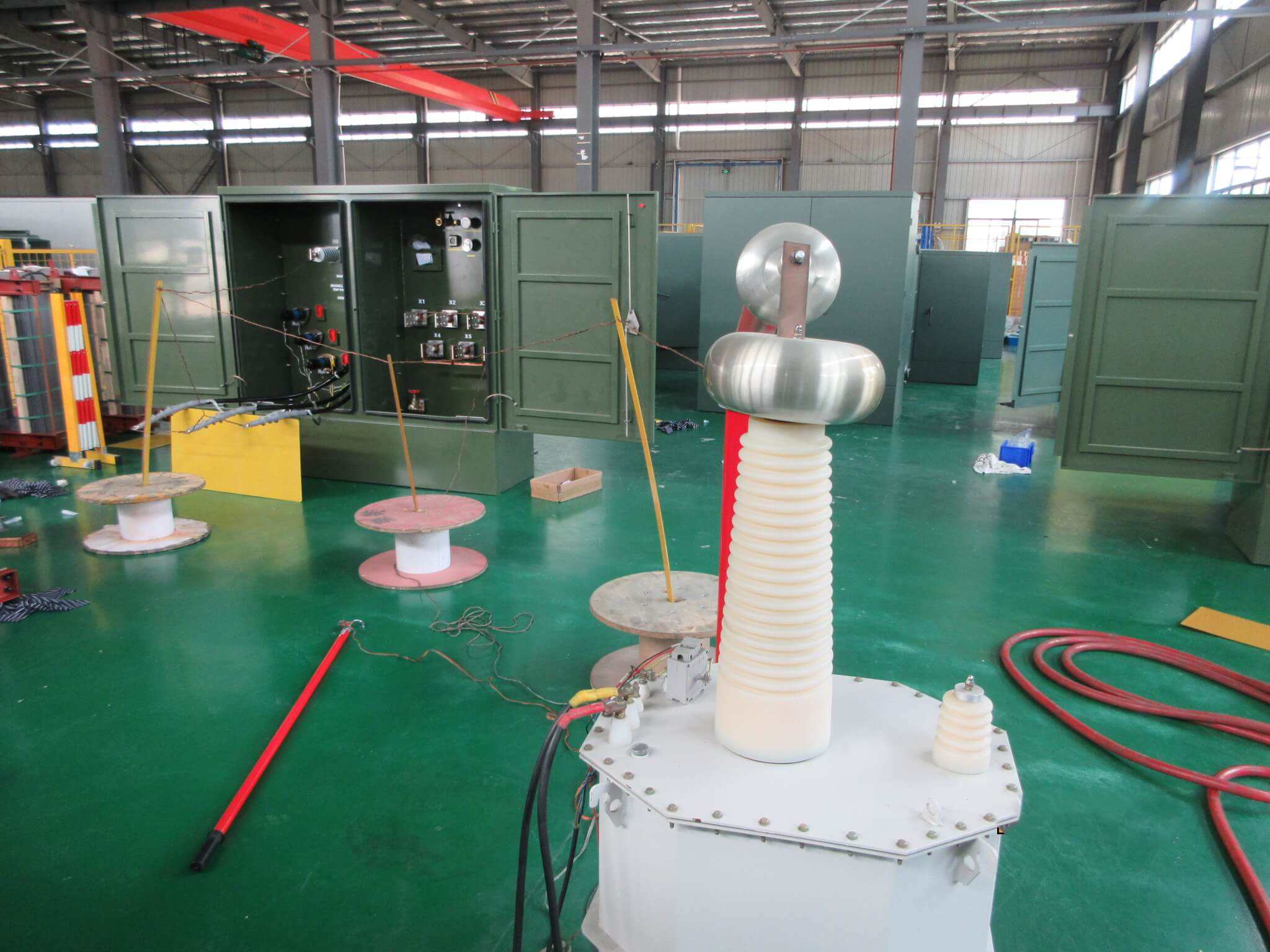
Progress test
In the manufacturing process of 2500KVA Three Phase Pad Mounted transformer, in order to ensure that each transformer meets high quality standards, NPC electric will conduct strict quality inspections on all key materials (such as iron cores, winding wires, insulation materials, etc.) to ensure that they meet the design and technical requirements and ensure the basic quality of the transformer. Regular inspections and tests are carried out at various production stages of the transformer (such as iron core assembly, winding processing, oil immersion treatment, etc.). Through this series of progress tests, it is ensured that every link of the transformer strictly complies with the design and safety standards, minimizes potential problems in the production process, and provides reliable quality assurance for the transformers delivered to customers.
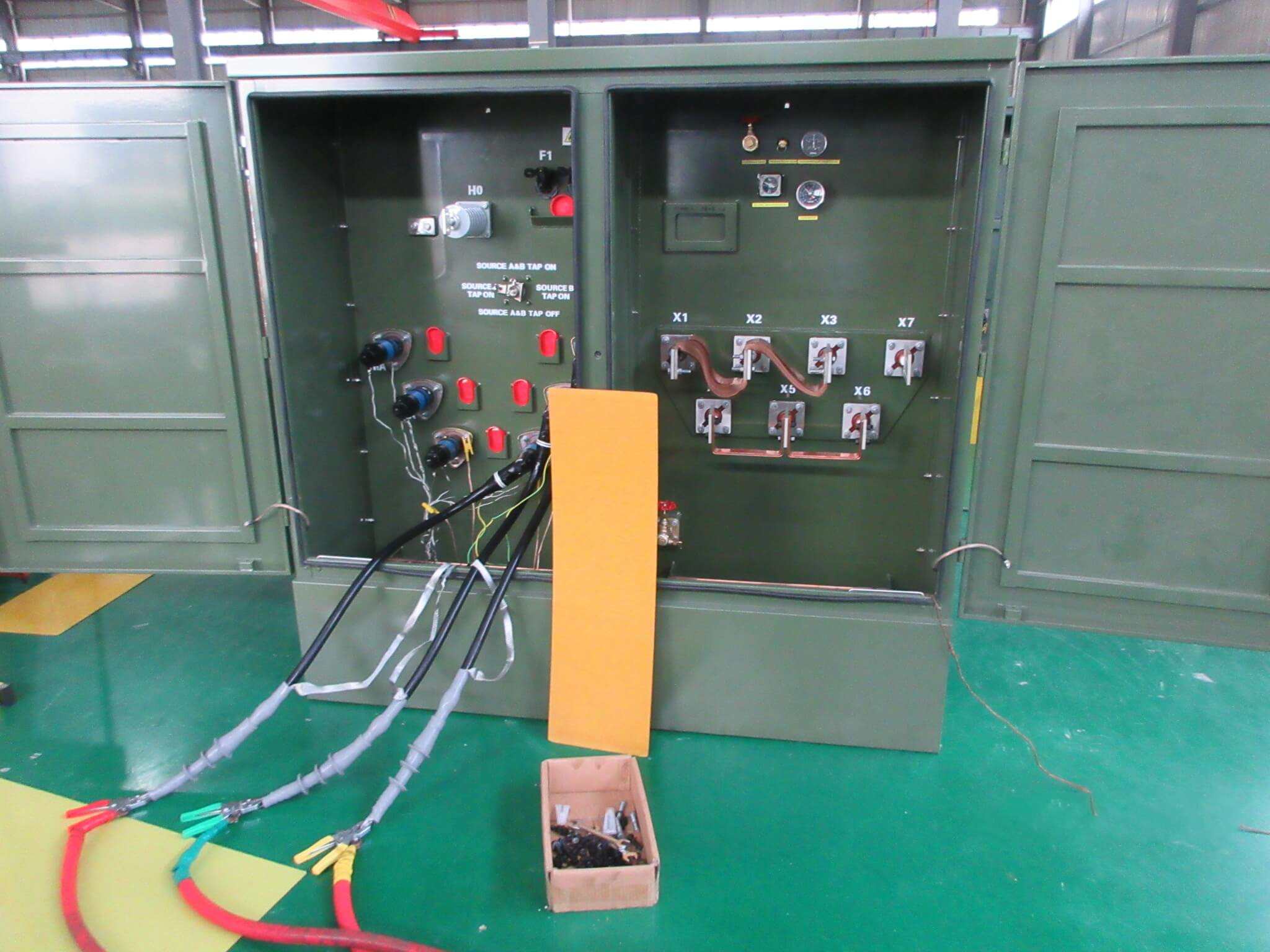
Design Tests
All transformer will be test after finished the production, test items as below:
♦ Insulation Power Factor
♦ Ratio, Polarity, and Phase Relation
♦ Winding Resistance
♦ Impulse Tests
♦ On load Loss Test
♦ No Load Loss Test
♦ Leak Test
♦ DC Insulation Resistance Test
♦ Transformer Turns Ratio/TTR (All Tap Voltages)
♦ Impedance Voltage & Load Loss (Rated Voltage)
♦ Polarity, 1-Ph / Phase Relation, 3-Ph (Rated Voltage)
♦ Excitation & No-Load Loss (Rated Voltage)
♦ Applied Voltage
♦ Induced Voltage
♦ Lightning Impulse
♦ Insulation Resistance (Rated Voltage)
♦ Temperature Rise
♦ Dielectric Withstand (Hipot)
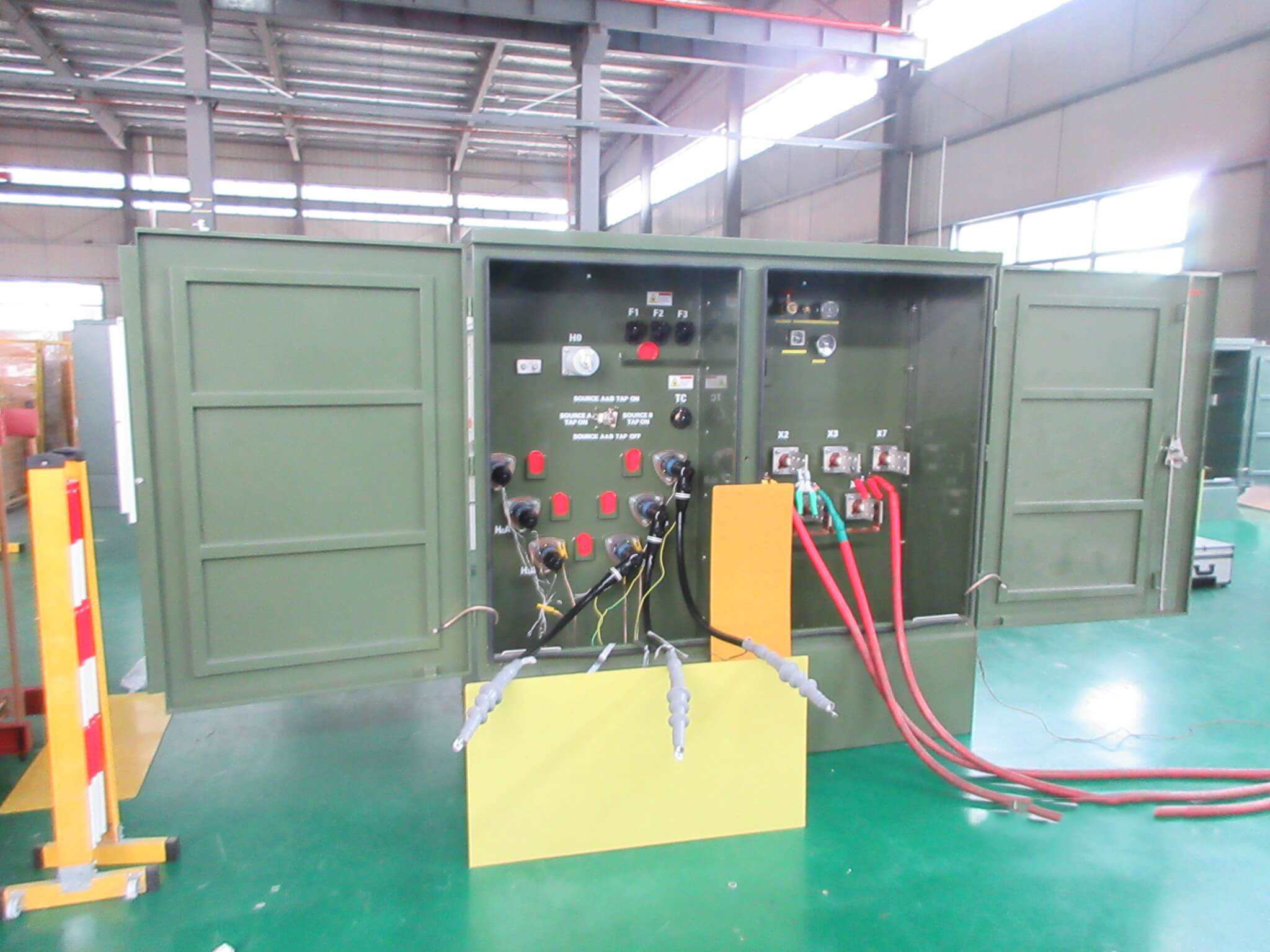
Transformer Factory Acceptance Test
After the production of 2500KVA Three Phase Pad Mounted transformer is completed, we will perform a comprehensive factory acceptance test (FAT), which is a key link to ensure that the electrical performance, mechanical performance and safety standards of the transformer meet the design requirements and industry specifications. Through this series of rigorous tests, we can confirm that each transformer has the best operating performance and reliability before delivery, and provide customers with guaranteed products.
Routine Test - Temperature Rise
Heating source (e.g. electric heater, heater belt, or adjustable constant temperature heater, the specific power is selected according to the equipment requirements)
Temperature sensor (e.g. RTD sensor, thermocouple, to ensure accurate measurement)
Ensure that the connection terminals and wiring are firm to avoid looseness affecting the test results.
Test under suitable environmental conditions: relative humidity below 75%, no rain (recommended temperature: 20-30°C).
Connect the test instrument correctly to the electrical terminals and temperature measurement points of the device under test (such as windings, cores, oil temperature measurement elements, etc.).
Initial condition record:
Measure and record ambient temperature, humidity, and atmospheric pressure at the start of the test.
Make sure the device is cold at the start.
Temperature of each winding (by resistance method or temperature sensor)
Core temperature
Oil temperature (for oil-immersed equipment)
Current, voltage and power at the equipment end
Duration of load
Record changes in ambient temperature.
Class B insulation: ≤80°C temperature rise
Class F insulation: ≤100°C temperature rise)
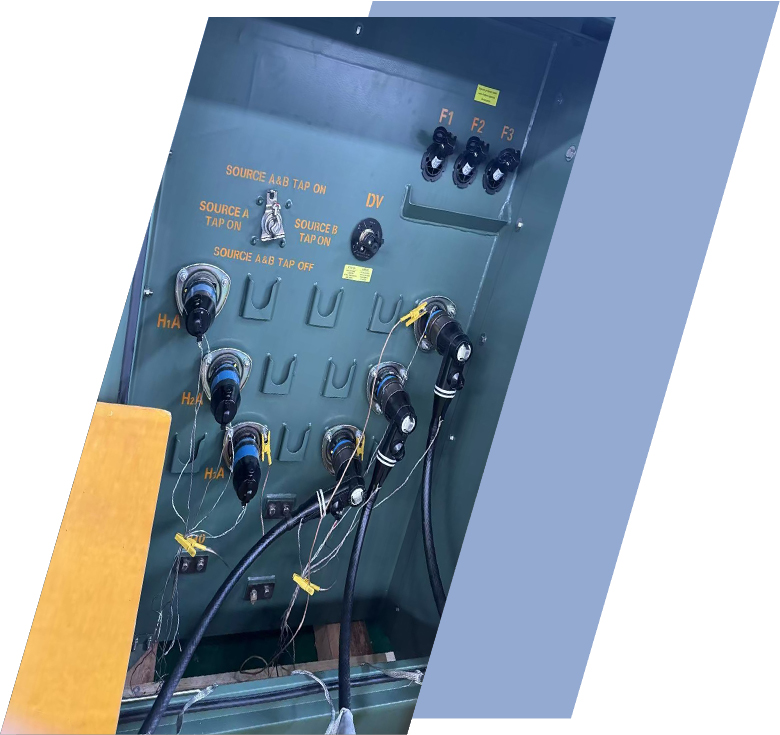
Application
Technical Advantages
Product Packaging
Related Products
FAQ From Customers
-
What is a Transformer?A transformer is an electrical device used to change the voltage of alternating current (AC). It works on the principle of electromagnetic induction, converting high-voltage current into low-voltage current or low-voltage current into high-voltage current. Transformers are widely used in power transmission, distribution systems, and various electronic devices.
-
What are the main uses of a transformer?The main use of a transformer is voltage conversion. Transformers are used in power transmission systems to help transfer electricity from power plants to consumers. In addition, transformers are also used in electronic devices such as chargers, televisions, power adapters, etc., to adjust the voltage to meet the requirements of different devices.
-
Do you have UL listed?Yes, our transformer has UL listed. We have exported to America many pad mounted transformer,substation transformer and HV.

